Features of combining tiles and laminate in the kitchen

When preparing a kitchen renovation, one of the most important tasks is to choose a practical floor material. In most cases, laminate and ceramic tiles are used. In recent years, these types of cladding have often been combined in one space.
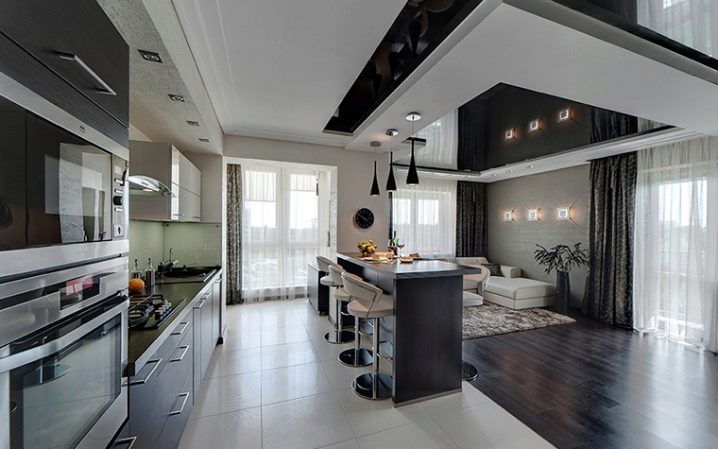
Advantages and disadvantages
One of the leading trends in interior design in a private house or apartment is the installation of combined floors, which combine materials such as laminate and tiles.
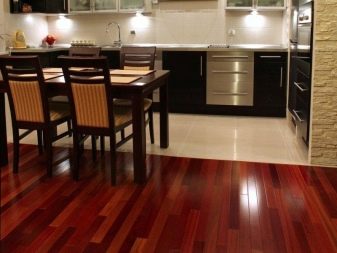
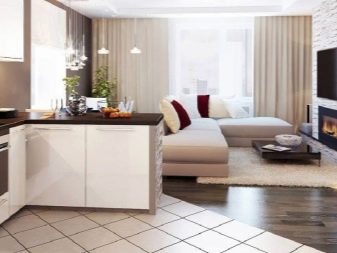
These coatings meet all the requirements for floor coverings, namely:
- they are easily cleaned of dirt;
- are resistant to mechanical damage, for example, to the impact of breakable dishes;
- resistant to heavy abrasion;
- without prejudice to their appearance, they tolerate the effects of household chemicals;
- retain their technical and operational properties with frequent contact with liquid media;
- do not absorb kitchen odors.
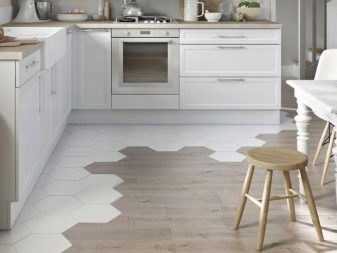
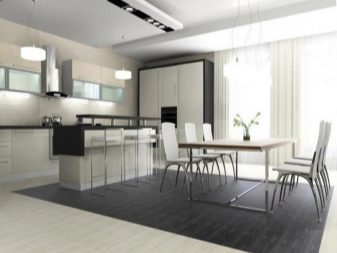
In addition, laminate and tiles look perfect together, especially if you choose them correctly in color and texture. This combination looks optimal in studios, as well as combined rooms that perform several functions at the same time - kitchen + living room or kitchen + dining room. However, in residential buildings with a standard layout, such solutions can be quite successful.
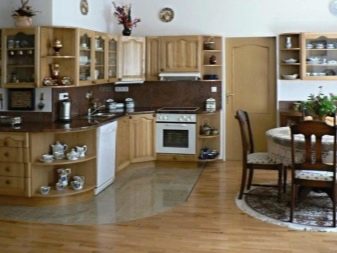
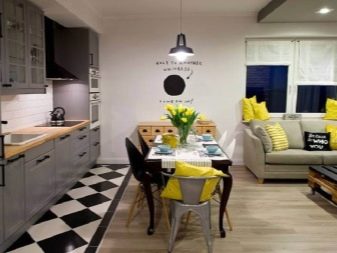
The advantages of combining tiles and laminate flooring include:
- hygiene;
- moisture resistance;
- resistance to acid-base solutions;
- mechanical strength;
- protection against premature wear in those areas that bear the greatest load;
- the ability to create a non-trivial design composition.
It is also important that when combining these materials, you can save on consumables without compromising the attractiveness of the appearance of the room.
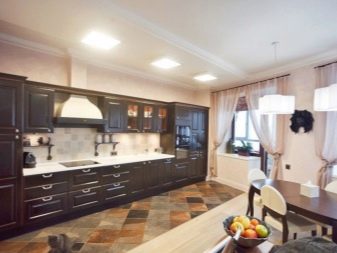
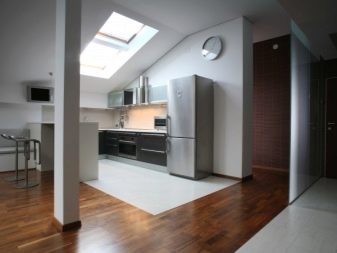
The disadvantages include:
- the complexity of the selection of materials that are in harmony with each other in shade and texture;
- the need for additional processing of the joints between the two types of panels, because if it is not enough to carefully think over the design and place the parts incorrectly, then the coating will become asymmetric and all costs will simply come to naught.
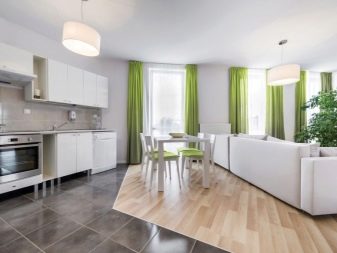
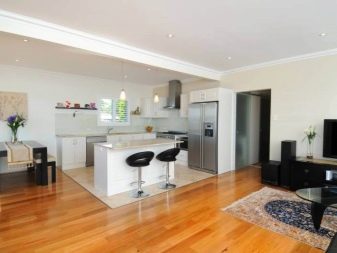
Usually tile coverings are laid in the work area - that is, where food is cut and food is prepared. This has a fairly simple explanation - it is much easier to remove grease, dirt and water from tiles. It is noteworthy that the tile has a rather dense structure, due to which it does not absorb organic acids, various dyes and all kinds of odors.
For a large and spacious kitchen, medium-sized tiles are traditionally used, less often large panels.
Smaller ones are optimal for creating country-style decor or mosaic decoration.
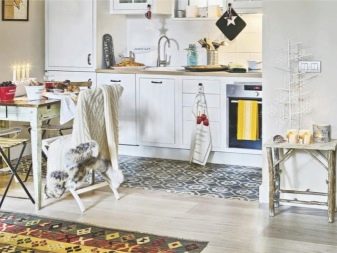
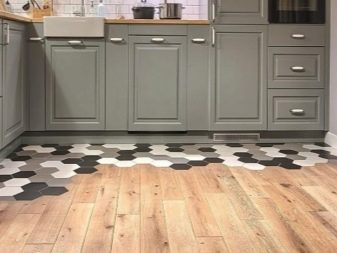
The thermal sensation of the coating is also important, namely, how the inhabitants of the house perceive it - cold or warm. Of course, there is no doubt about the fact that in fact absolutely all materials have the same temperature, equal to the temperature in the room, however, tiles are perceived much colder than laminate. The point here is in thermal conductivity - the temperature of the material is, for example, 24 degrees, and the temperature of the human body is about 36 degrees.Touching the floor with our feet, we give off some of our heat to the coating, and the faster this transfer is made, the warmer the material seems to us.
That is why it is better to lay laminate flooring in the recreation area, which provides a comfortable feeling of warmth.
The golden rule for decorating a kitchen is as follows - the smaller the free area of the kitchen, the more concise and simple the decor should be. Laminate and porcelain stoneware create a discreet yet stylish finish. The materials balance each other - the glossy surface of porcelain stoneware or tiles, combined with natural wood lamellas, creates a special atmosphere in the space that emphasizes the taste and impeccable style of the owners of the residential building.
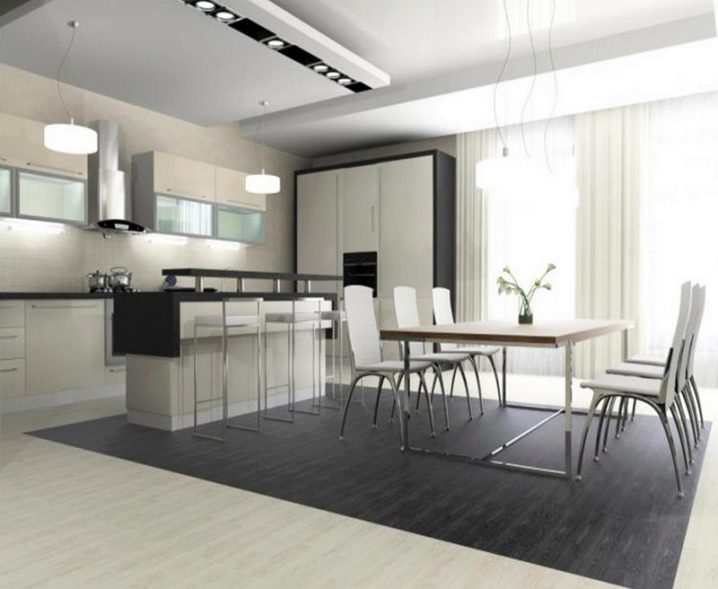
Combination rules
There are no strict requirements for combining tiles and laminate, but there are a number of unspoken recommendations that will turn the kitchen into a stylish and noble composition.
In areas with a reduced level of natural insolation, it is better to use lighter shades of laminate and tile - in this case, the space visually increases and becomes much lighter and more airy.
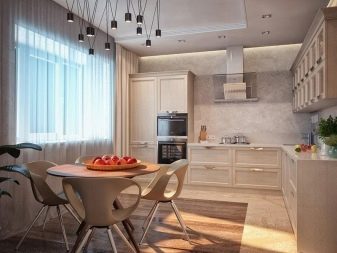
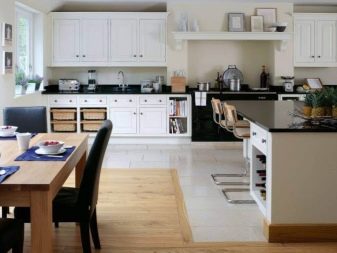
In kitchens with high ceilings, darker finishes can be preferred., then the overall design will be more aristocratic and stylish. At the same time, keep in mind that the darkest shades are the brightest, so cleaning such coatings must be carried out especially carefully and always with the use of special cleaning agents.
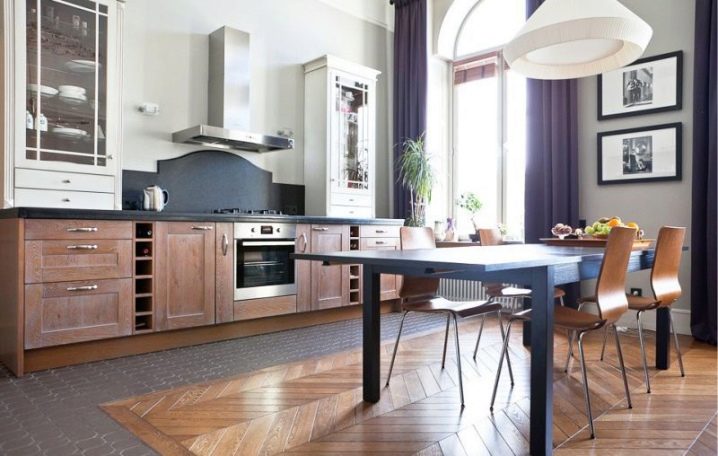
Do not forget that warm shades can be combined only with warm ones, respectively, cold ones with cold ones, and the combination of warm and cold colors looks pretentious and tasteless. It is optimal when one of the shades in the decor of the laminate is present in the design of the tiles.
If the tile has a bright, catchy design, then the laminate should be in soothing colors.
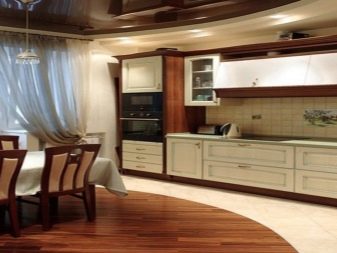

Design options
The combination of tiles and laminate tiles is of tremendous functional importance, as it allows you to make the kitchen more functional and practical without compromising the aesthetics of the room. The choice of colors and textures is primarily enhanced by the design features of the entire room as a whole.
For loft-style decor, preference should be given to pearl tiles in combination with gray lamellas. If you are planning to decorate a room in the Art Deco style, it is better to pay attention to the dark blue or charcoal coating. Materials of wood shades - rich brown, gray, beige or cream look quite expensive and noble.
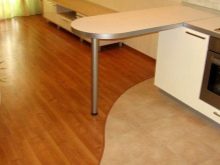
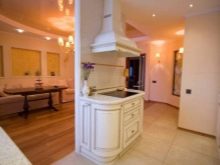
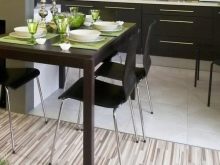
The direction of laying the laminate and tiles must certainly be the same, so that visually one material passes into another. Then it will be possible to create an integral finished composition, which is optimal if the kitchen is poorly lit or has small dimensions.
When implementing the concept of Art Deco, as well as minimalism and classics, straight lines and sharp corners are used in the design of the floor, while the designers allow the curly laying of ceramic panels.
But if you are a supporter of modern or fusion style, then you can actively use wavy and curvilinear forms.
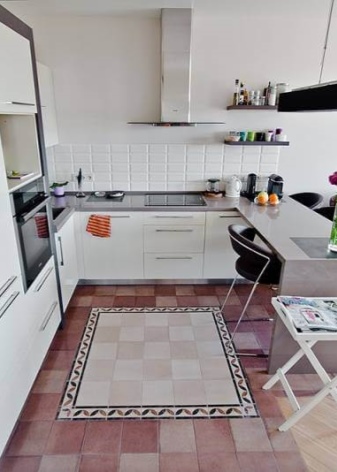
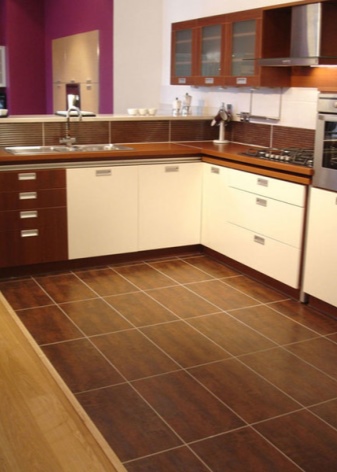
If you have a small-sized kitchen, then it is better to arrange the working area not completely, but simply draw a contour using tiles. But even in this case, you should not use a combination of materials in halls with an area of less than 6 square meters. m, but at 12 meters you can already highlight a full-fledged dining area by laying a carpet type, although it is better to avoid a sharp contrast in the colors of the walls and floor.
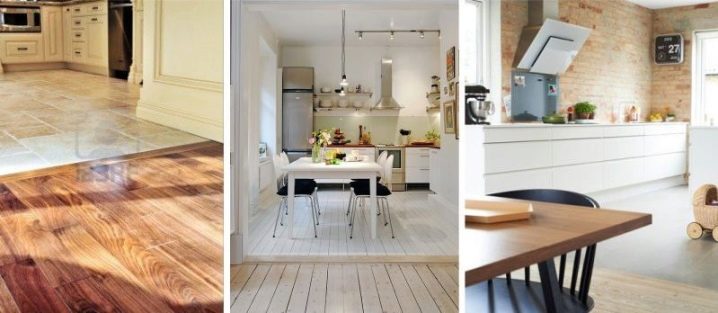
Combined floors always look beautiful and quite practical. It is good to complement such decor with wooden furniture and patterned textiles made of cotton and linen. The bar counter and a small arch look stylish. Such solutions allow achieving even greater visual division into functional zones of the kitchen space.
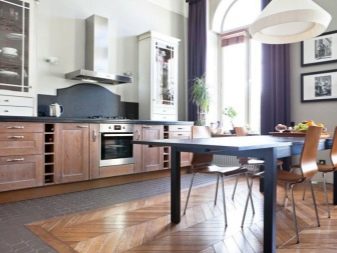
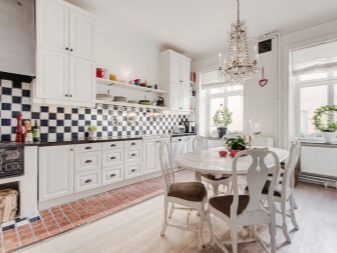
Docking methods
In order for the combination of laminate and tile in the decor to look really stylish and effective, you need to worry about the correct design of the joints of the panels. For this, special strips are used, which can be made of different materials. Aluminum or steel are considered the most practical - they serve for a rather long time, have high wear resistance, but at the same time, in light interiors replete with glass elements, they often look too rough.

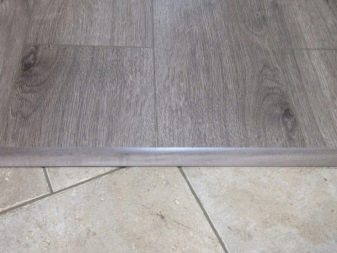
Wooden planks are the most aesthetic, but they are optimal only for solutions with right angles and clear geometry, since it is not possible to arrange rounded transitions with wood.
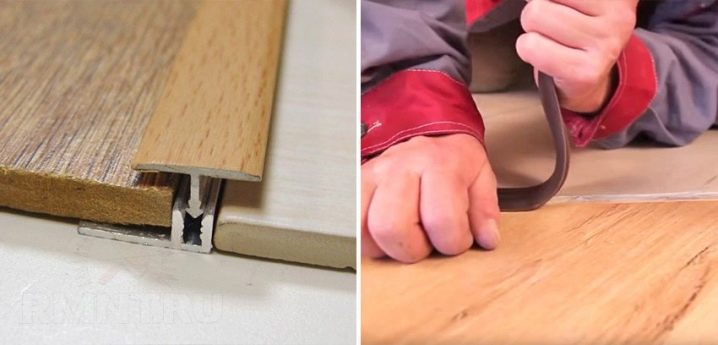
The use of plastic moldings can be a fairly budgetary, but at the same time reliable option, especially since the industry offers a wide variety of color solutions for such products.
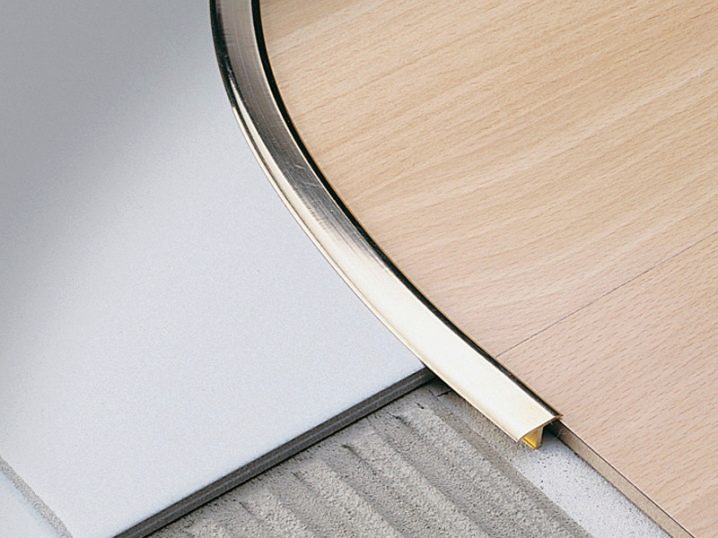
Balsa underlays can also be placed at the seams. They are distinguished by high plasticity, therefore, they allow them to fill the entire space between the laminate and porcelain stoneware as much as possible, while the joint area becomes almost invisible.
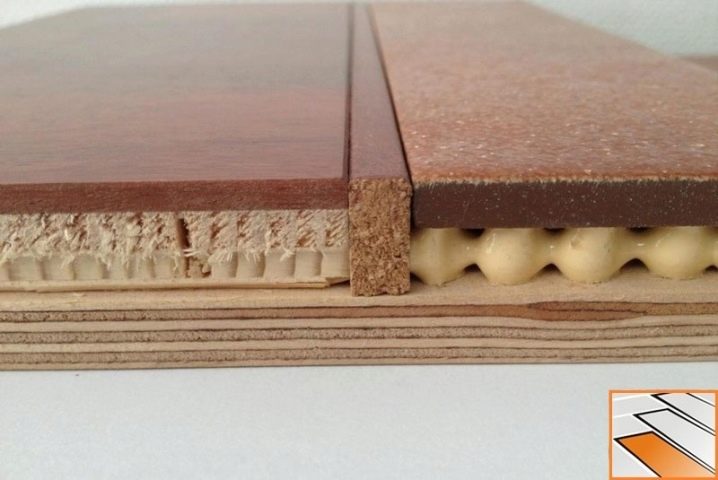
Such materials as polyurethane foam, silicone solution and mastic are in great demand. Such compositions are quite easy to apply and perfectly mask the seam.
However, their service life is short, which means that you will have to constantly monitor their condition and update the coverage from time to time.
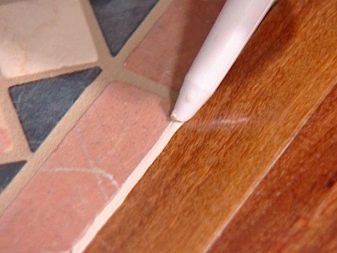
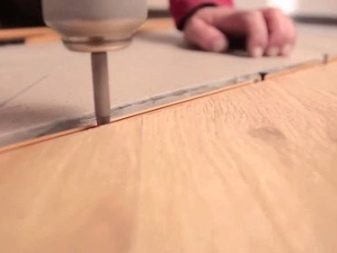
There are also specialized profiles, for example Step Flex. They can take absolutely any shape, so they can be used for any decor, even the most non-standard. It is noteworthy that they have slightly rounded edges in the lower part, due to which a snug fit of the materials to each other is ensured.
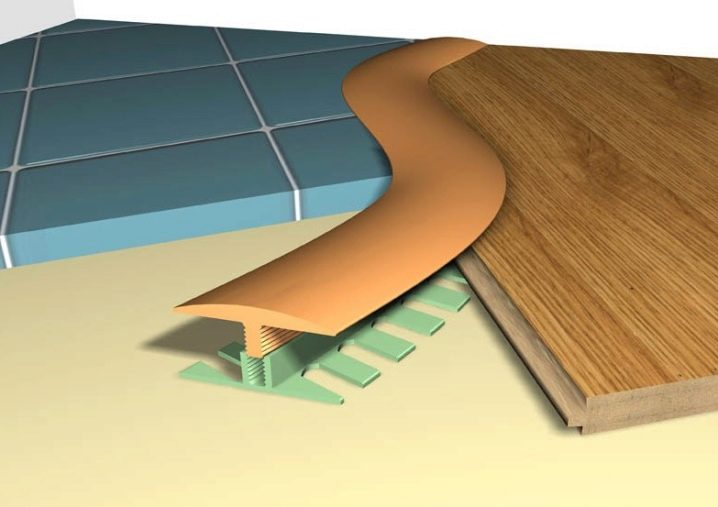
Beautiful examples
The zoning of the premises looks more stylish if you use the idea of combining laminate and tile coverings in the kitchen when decorating the interior space.
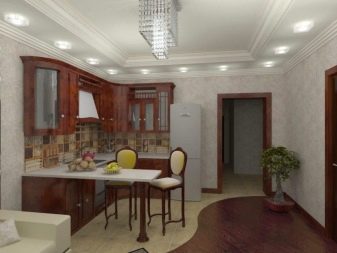
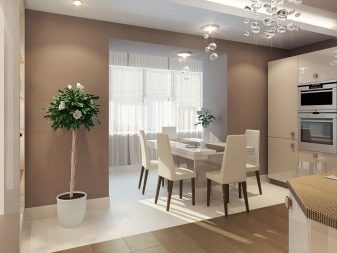
At the same time, the combination of various colors, textures and forms of decor allows you to implement the most interesting and original design concepts.
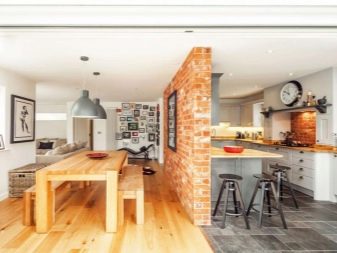
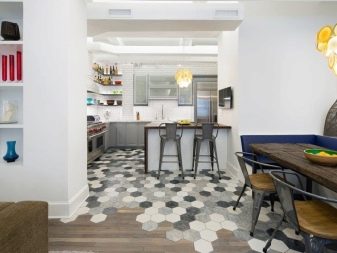
How to join laminate and tiles without a threshold, see the video below.










The comment was sent successfully.